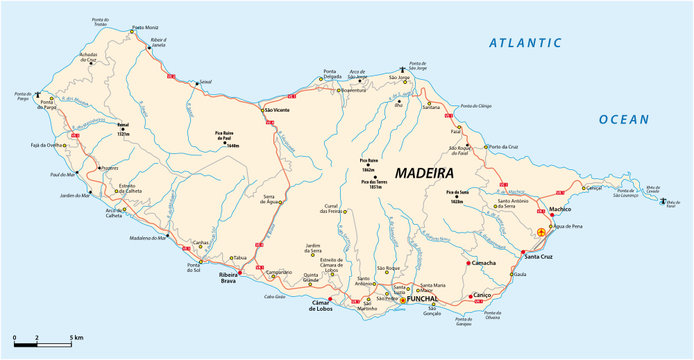An Art Island refers to an island characterized by prominent artistic or creative elements such as contemporary art museums, artist studios, site-specific art events, communities of artists, and art festivals that are often created by famous artists, architects, and creators (Qu 2020; Prince, Qu, and Zollet 2021). Representative cases include peripheral islands Naoshima, Teshima, and Inujima in the Seto Inland Sea of Japan; Fogo Island Arts’ Bridge Studio on a remote island of Newfoundland, Canada, and the craft-art island of Bornholm, Sweden. Unlike the original island art, ‘art island’ implies a reterritorialization/creative place-making process (intervening in, interacting with, as well as influencing the co-creation between art and communities) shaped by art development in a context of social transformation. An important feature is social transformation: art islands frequently deploy socially engaged artwork and events. (Qu 2020; Crawshaw 2018; Favell 2016; Mccormick 2022).
Art intervenes on the island
Art Islands involve interrelated processes that co-create a new art island identity between art and destination. Socially engaged art brings site-specific and community based public artworks, art projects, or events into a community (Qu 2019; Mccormick 2022). It imports typically non-local artistic and cultural elements that impact the local community’s original landscape, lifestyle, art, and culture (ibid). The social practice transition of contemporary art consists of stepping out of art museums and the traditional art world into the urban and rural social context as relational art sites (Qu 2020). Relational art sites are “assemblages, they are hybrid spaces where the line between what is essentially rural and urban, as well as local and global, is blurred through their intensive interactions with extra-local people, ideas, materials, capital, investments, discourses, and processes” (Prince, Qu, and Zollet 2021, 250). The transition from original island community to art island is marked by concurrently changing processes of intervention, resistance, adaptation, and co-creation at the local level (ibid). Artists and arts organizers often contemplate the utopic ideals implied in “art islands” (Favell 2016). In short, the community level outcomes of art-island intervention are not limited to art but connect to rural/urban planning, art tourism, creative place-making, rural development and revitalization (Qu 2020; Prince, Qu, and Zollet 2021).
Art interacts with the island
Within communities, art is usually described as having the potential to “read” local issues rather than solve them. (Crawshaw and Gkartzios 2016). Art is limited in its capacity to remedy social issues (Qu 2020; 2019). Merely creating art museums and artworks or otherwise making an island more “artistic” does not necessarily make an art island. The overlapping relationships between art and tourism are becoming inseparable on art islands (Franklin 2018). Often, art islands mix art development with tourism development (Qu 2019; 2020), accompanied by creative entrepreneurship (Prince, Qu, and Zollet 2021; McCormick and Qu 2021).
Art can be also considered as “an ingredient of landscape planning” (Crawshaw 2018, 10). During the art tourism reterritorialization process, observing whether the development enhances community prosperity or rather brings a commercialized destruction to the community is essential to evaluate whether art is only ‘on’ or also ‘for’ an island (Qu 2020).
Art island co-creation
Aside from the external development of art or art tourism, the endogenous efforts within communities play an important role in creating art islands. Creative residents with businesses have the power to co-create the art island community through their resourceful behaviors by enhancing social, tourism, and art development (Mccormick and Qu 2021; Qu, McCormick, and Funck 2020). Newcomers also play an important role; urban-to-rural migrants, for example, “are more likely to establish fancy cafés and guesthouses, often incorporating elements of contemporary design in their operations to adhere to the ‘art island’ character.” (Prince, Qu, and Zollet 2021, 248). A healthy neo-endogenous synergy between art and island provides a relational understanding of this co-creation mechanism. Critically, given that each island possesses its own unique social structure and cultural context, no two art islands are alike. Each has its own set of interrelationships and its own brand of creativity. Art islands are complex, trans-local assemblages of contemporary art and tourism, shaped by complex art-community co-create and exchange.
Bibliography (Chicago Manual of Style)
Crawshaw, Julie. 2018. “Island Making: Planning Artistic Collaboration.” Landscape Research 43 (2): 211–21. https://doi.org/10.1080/01426397.2017.1291922.
Crawshaw, Julie, and Menelaos Gkartzios. 2016. “Getting to Know the Island: Artistic Experiments in Rural Community Development.” Journal of Rural Studies 43: 134–44. https://doi.org/10.1016/j.jrurstud.2015.12.007.
Favell, Adrian. 2016. “Islands for Life: Artistic Responses to Remote Social Polarization and Population Decline in Japan.” In Sustainability in Contemporary Rural Japan: Challenges and Opportunities, edited by Stephanie Assmann, 109–24. London and New York: Routledge.
Franklin, Adrian. 2018. “Art Tourism: A New Field for Tourist Studies.” Tourist Studies 18 (4): 399–416. https://doi.org/10.1177/1468797618815025.
McCormick, A. D. (2022). Augmenting Small-Island Heritage through Site-Specific Art: A View from Naoshima. Okinawan Journal of Island Studies 3 (1).
Mccormick, A D, and Meng Qu. 2021. “Community Resourcefulness Under Pandemic Pressure: A Japanese Island’s Creative Network.” Geographical Sciences (Chiri-Kagaku) 76 (2): 74–86.
Prince, Solène, Meng Qu, and Simona Zollet. 2021. “The Making of Art Islands: A Comparative Analysis of Translocal Assemblages of Contemporary Art and Tourism.” Island Studies Journal 16 (1): 235–54. https://doi.org/https://doi.org/10.24043/isj.175.
Qu, Meng. 2019. “Art Interventions on Japanese Islands: The Promise and Pitfalls of Artistic Interpretations of Community.” The International Journal of Social, Political and Community Agendas in the Arts 14 (3): 19–38. https://doi.org/https://doi.org/10.18848/2326-9960/CGP/v14i03/19-38.
———. 2020. “Teshima – from Island Art to the Art Island.” Shima: The International Journal of Research into Island Cultures 14 (2): 250–65. https://doi.org/10.21463/shima.14.2.16.
Qu, Meng, A. D. McCormick, and Carolin Funck. 2020. “Community Resourcefulness and Partnerships in Rural Tourism.” Journal of Sustainable Tourism, 1–20. https://doi.org/10.1080/09669582.2020.1849233.


